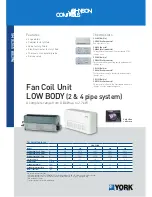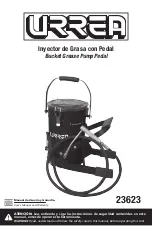
www.cglifesciences.com
BEFORE YOU START:
The reactor is now ready for use. Before filling the reactor, make sure the 0-14mm drain valve is in the closed
position. Once setup is complete, the reactor can be moved into position and connected to the circulator.
Keep the wheels locked for added safety.
Chemglass presumes some knowledge of this type of equipment on the part of the end user. Properties such as
mechanical strength of glass, thermal stress introduced to the reactor from exothermic reactions, allowable
temperature differentials, pressure and vacuum must all be considered with extreme caution.
If you have any questions, please contact our technical service department at (800) 843-1794 or
Complete Assembly Instructions
The unjacketed process filter reactor, the fully assembled reactor head, stirrer shaft & agitators, Tru-Stir™ stirrer
shaft coupling, PTFE stirrer bearing, temperature probe & adapter, and motor are shipped assembled on the
support frame. Use the following instructions should you need to remove or adjust these components.
1.
Remove torque knobs from reactor support clamp and remove PTFE
coated support clamp.
2.
Please refer to filter base assembly then place filter base in the bottom of
the reactor stand, positioning detachable drain valve toward the front of
the stand.
3.
Carefully place the reaction vessel on the filter base and line up with the
vessel. Replace the front reaction vessel clamp and tighten the torque
knobs evenly until you hear a “click”.
4.
Secure the vessel and filter base together with the CG-141-T quick release
PTFE coated clamp, making sure that the entire o-ring is seated in the
groove. Adjust the threaded bolt to improve the seal around the flange.
5.
Place the 200mm Perfluoro o-ring into the groove of the top reaction vessel
flange.
6.
Assemble the stirrer shaft and agitators and lower into the reaction vessel.
7.
While lowering the reaction vessel lid onto the vessel, carefully insert the
end of the stirrer shaft through the 45/50 center neck of the lid. PLEASE NOTE: THE MECHANICAL SEAL STIRRER
BEARING IS NOT INSERTED IN THE HEAD AT THIS TIME.
8.
Dismantle then slide the mechanical seal stirrer bearing over the end of the stirrer shaft and “press” into the
center neck, sealing the o-ring.
9.
Position the powder fill port towards the front of the reactor.
10.
Secure the vessel and lid together with the quick release PTFE coated clamp, making sure the entire o-ring is
seated in the groove. Adjust the threaded bolt to improve the seal around the flange.
11.
Attach the Tru-Stir stirrer shaft coupling to the 1/4 HP electric stirrer motor shaft. Then attach the motor to the
support frame via the supplied four socket head cap screws.
12.
Insert the end of the stirrer shaft into the stirrer shaft coupling and tighten the collar with an Allen wrench.
Check the vertical alignment of the reactor and adjust if necessary.
13.
Tighten the aluminum nut on the mechanical seal stirrer bearing, which compresses the bearing onto the
stirrer shaft.
14.
Attach the electric stirrer motor controller and the digital temperature monitor to the support frame via the
small Kwik Klamp II and 1/2" OD 90°S.S. support rod.
15.
Attach the control cord from the electric stirrer motor to the rear panel of the controller. Make sure that the
speed control knob on the controller is turned completely off BEFORE turning the controller on. If using the air
motor, attach air source to the motor. The brass needle valve on the back of the air motor should be
CLOSED.
16.
Loosen compression nut and insert the thermocouple thru the thermocouple adapter and then insert the
adapter into the desired side neck. Adjust the depth of the thermocouple by tightening the Chem-Thread at
the top of the adapter. PLEASE NOTE: CHECK TO SEE THAT THE THERMOCOUPLE DOES NOT COME INTO
CONTACT WITH EITHER OF THE AGITATORS BY MANUALLY TURNING THE STIRRER SHAFT. Attach the thermocouple
cord to the probe then to the temperature monitor.
17.
Attach the condenser and any other peripheral glassware.
*NOTE: THE BOTTOM IMPELLER SHOULD NOT BE RUBBING ON THE FILTER*



























